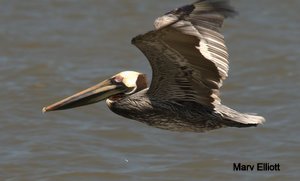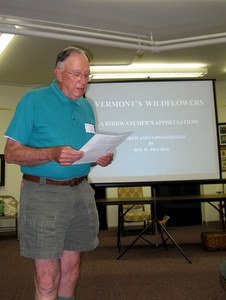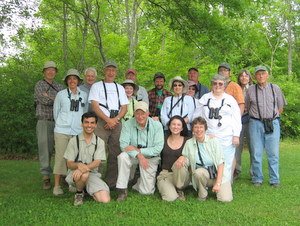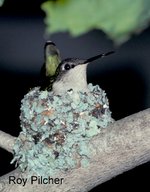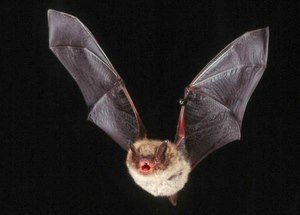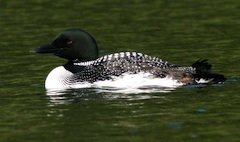In Summer World, Bernd Heinrich completes his inquisitive survey of seasonal adaptations that he inaugurated in Winter World (reviewed in fall 2008 newsletter).
Upon opening the pages, one’s sense of touch is aroused by the unusually softly textured paper. How perfect, I thought, for those of us with a bent to cozy up for a winter’s evening reading and dreaming warmer climes and times. Whether this will also be true of the paperback edition coming out in April, I cannot say. The back cover flap says it’s also available as an e-book. Sorry, no sensual accompaniments there!
Although it is entitled Summer World, Heinrich’s observations do not begin at the summer solstice (June 21), but rather in February, when he first sights a raven pair building a nest. He points out that, though we tend to think of winter, with its test of severe cold, as necessitating months of preparation, the few truly warm weeks of summer are a limited time for successfully mating and raising young.  American RobinSo birds, insects and amphibians, all get as early a start as possible to take advantage of the warmest days. Also trees, for one might say they are “obsessive” about preparation, since they flush out early, complete their yearly growth shortly thereafter, and by July, have developed buds for the next year.
American RobinSo birds, insects and amphibians, all get as early a start as possible to take advantage of the warmest days. Also trees, for one might say they are “obsessive” about preparation, since they flush out early, complete their yearly growth shortly thereafter, and by July, have developed buds for the next year.
I found his further discussion of tree budding particularly enlightening. Many of us have found mid-winter bud identification workshops and field trips quite frustrating. Now, to make it more perplexing, Heinrich alerts us that many northern forest trees have separate buds for leaf and flower. There is a logical utility for this. Wind-pollinated trees flower a month before leafing out, when they can be more easily pollinated because there is less blockage of wind carrying pollen over leaves. On the other hand, bee-pollinated basswood is pollinated a month or so after the leaf buds have opened, when, in late summer, the bee population has peaked.
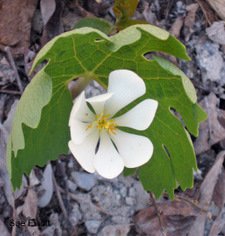 BloodrootAs in Winter World, the author relates his ingenious yet practical methods for evoking nature’s secrets. Using garbage can lids, he studies crocuses’ response to light, and to consider Bloodroot’s blooming relation to temperature, he puts them in his refrigerator.
BloodrootAs in Winter World, the author relates his ingenious yet practical methods for evoking nature’s secrets. Using garbage can lids, he studies crocuses’ response to light, and to consider Bloodroot’s blooming relation to temperature, he puts them in his refrigerator.
A large part of the book is given to discussing insects. He delves into great minutiae on the distinct nests and unique behaviors of various wasp species and wonders, “Aside from the mystery of how wasps can do so much with so little, there is the mystery of how what they know, is passed faultlessly from one generation to the next.”
Seemingly instinctual behavior of some moths and butterflies can appear positively perspicacious. Their caterpillars chip off the petiole of the leaf they have just partially consumed, allowing it to drop to the ground. Heinrich calls this “covering their tracts,” from buds on the lookout for caterpillar activity.
However, I found the author occasionally spotty on the lucidity of his explanations. For example, a seven-page dissertation explores red and black ant colonization, emigration and social interaction. Yet, Baltimore Checkerspot caterpillar in a subsequent chapter, in one paragraph, he describes a sphinx moth caterpillar that overnight became “covered with 91 white braconid wasp cocoons, its skin covered with little dark puncture wounds.” There is a rather ghastly photo of this phenomena, but not explanation. Had the caterpillar ingested wasp eggs during prior days when Heinrich had been watching it casually munching leaves? For someone who is professor emeritus of biology at the University of Vermont, the answer is probably something he considers quite commonplace.
Baltimore Checkerspot caterpillar in a subsequent chapter, in one paragraph, he describes a sphinx moth caterpillar that overnight became “covered with 91 white braconid wasp cocoons, its skin covered with little dark puncture wounds.” There is a rather ghastly photo of this phenomena, but not explanation. Had the caterpillar ingested wasp eggs during prior days when Heinrich had been watching it casually munching leaves? For someone who is professor emeritus of biology at the University of Vermont, the answer is probably something he considers quite commonplace.
The author redeemed himself, in my estimation, by providing an answer to something that struck my curiosity this past fall. On many golden leaves of a neighbor’s poplar, I noted a dime-sized deep green splotch, at the base, near the mid-vein. Heinrich put similar spotted areas under a microscope and found feeding “leaf miner” caterpillars with trails of black fecal pellets.
As distinct from Winter World, in Summer World Heinrich takes more excursions off course into philosophical speculation. In sequential chapters, he hypothesizes on the possibility of life on other planets, presents a diatribe on global working that leads into the necessity of a “spiritual imperative,” and theorizes how man evolved from a “hairy” ape into a “naked” human.
All in all, I was less enamored of this book than Winter World, even though the text is accompanied by beautiful and clarifying drawings and watercolors, which I always consider a plus. On the contrary, entomologists and other insect enthusiasts would be enraptured. Perhaps this is because, despite being so numerous, insects are more inconspicuous, often considered a nuisance, and requires time, patience, and close observation to understand the intricacies of their lives.
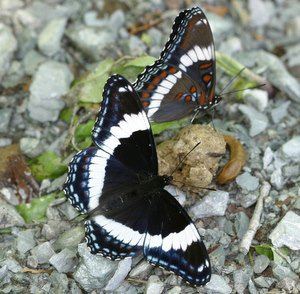 White Admirals on animal scat
White Admirals on animal scat